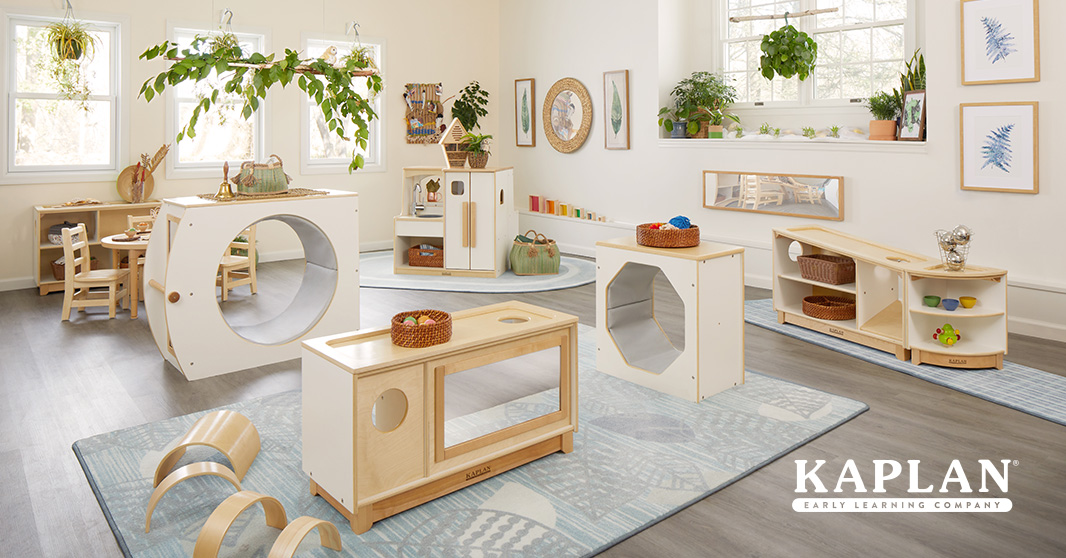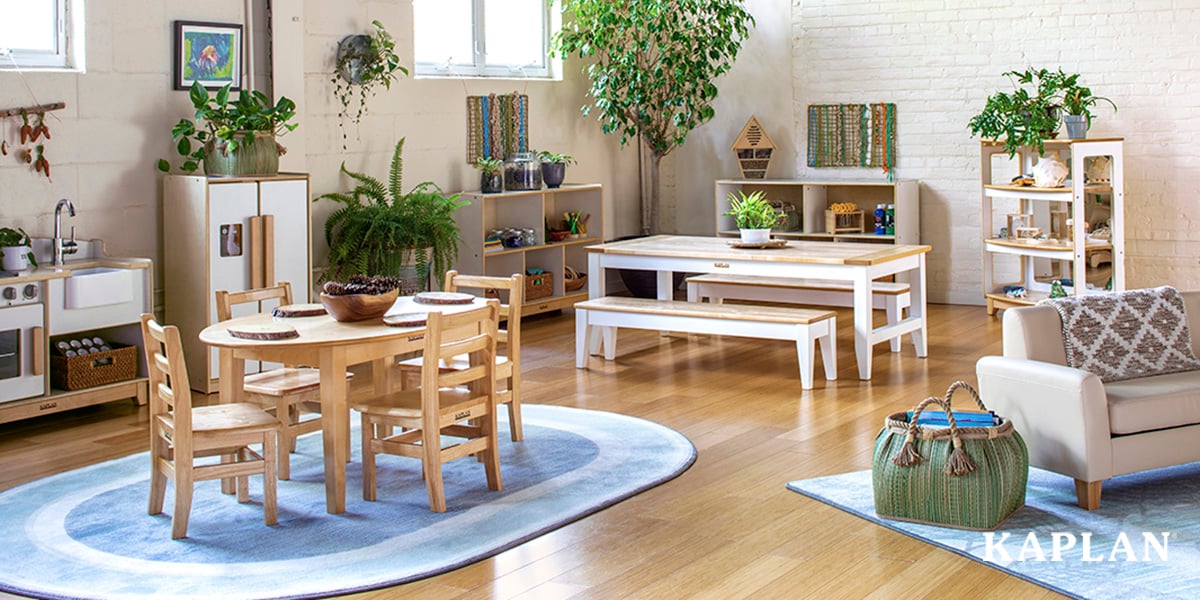If you're outfitting a new preschool, infant, or toddler classroom, you know this is a large investment of both time and money. You're likely asking yourself how you're going to fit this into your schedule, your budget, and into the constraints of modern standards set by the state or federal guidelines. How are you going to choose the right furniture, carpet, learning materials and curriculum? Do you have the expertise to make all of these choices on your own? What happens if you get it wrong? What if a child gets hurt or you choose incorrectly for the specific needs of your population?
Each and every one of these questions can be anxiety-inducing for a multitude of reasons. Kaplan Early Learning Company has worked in this space for over 50 years and we've seen everything from centers trying to bring their outdated classrooms up to code to municipalities building brand new, state-of-the-art facilities.
That's why we're going to give you the step-by-step guide to making the absolute best choices. In this article, we will cover how to establish budgets, timelines, and design guidelines that will make shopping for and choosing the best furniture a breeze.
Educators should ask themselves 5 important questions before they begin shopping.
1. How should I budget for my unique classroom set-up project?
Having a set budget will make the purchasing process easier, because it narrows the scope of options to choose from.
If opening a brand new center, expect to spend 40 to 50 percent of your budget on furniture and carpets. This may seem like a lot, but they are a durable expense: These investments will last for years, sometimes decades. The rest of your budget will fill out the classroom: brain-building toys, manipulatives, STEM explorations, process-driven art materials and authentic dramatic play items.
Further, the furniture sets the entire tone for the center you will be running. Do you want the richness and durability of premium solid maple furniture? Perhaps you have opted for a nature-inspired design that uses authentic materials and curved lines that support natural play patterns, so you choose Sense of Place for Wee Ones. Maybe you’re running a Montessori program and having flexible seating is a must. Whatever you decide to do, the landscape you create with the furniture and carpets in the room will have a profound impact on the learning and engagement level.
Finally, most reputable retailers will offer limited lifetime warranties that protect the furniture from defects.
If you are concerned that your budget won’t cover all the costs, don’t worry. Many educational grants exist. Start by checking with the agencies in your state that allocate public educational dollars. An experienced educational sales rep can help you through this process.
Remember: some funding requires monitoring and reporting to measure success, a process educators must be familiar with and able to take the time to do it, or their funding will be in jeopardy.
Don’t forget about financing! Most vendors have financing options for customers. Make sure you understand the credit terms, and if money will be required up-front, so you can allocate accordingly.

2. How many children am I serving, and what ages or developmental levels will be using the furniture in my classroom?
Consider child-to-teacher ratios so you don’t over-order and crowd your classroom. Having too little or too much breathing room can lead to challenging behaviors, especially in children with emotional/behavioral disorders.
Are you half-day or full-day? Does your space do double duty as an extended-day center, or some other purpose? Will you serve children with different abilities in the same room? You need to consider both the numerical age of the children being served, and their developmental needs. For example, a classroom for children with physical disabilities could have different furniture needs than those of the same age, but without disabilities. Choose furniture with inclusivity and the rights of children in mind.
3. What is my goal for my classroom environment?
Are you aiming to meet state licensing requirements? To design a unique environment that will make your center stand apart from the competition? Or meet quality rating or accreditation standards? Are you designing with a specific curriculum in mind?
The goal or requirements you are trying to achieve will define the scope of your classroom design. Understanding that each center has unique goals, ensuring all decision makers are aligned on your goal, and communicating with vendors or sales representatives can help guide you to the right solutions.
4. What style classroom furniture do I want?
Imagine the classroom in its finished state. What does it look like, sound like, feel like? What interactions will the children have in the space? How will the educators respond? The classroom furniture is the most impactful feature in a classroom, and when designed intentionally, it has the power to transform learning. Your vision should ladder up to the kind of educational program you want to be.
Many educators want furniture with natural wood, while others prefer a pop of color. Some want a modern look, while others seek nature-inspired. Some need furniture that is adjustable in height, mobile or modular. Clearly define the style you desire, so you can more quickly find the perfect fit.

5. What is my timeline for buying furniture for my classroom?
Do you have the classroom space already? Or is it under construction? Can you accept deliveries now, or are you waiting for a certificate of occupancy?
Understanding your timeline, and the many factors that contribute to it, is critical. If you are using public funds, make sure you understand the deadlines to allocate and then spend the money your center was awarded, and whether or not you need to receive your new furniture by a certain date. Some funding requirements ask that purchases be on-site by a certain date, but those deadlines vary by region and funding stream.
Want help selecting your classroom furniture? A Kaplan Early Learning Company educational sales representative is at your service. Our talented team members average over 10 years’ experience in the early childhood education industry. Find yours now.

